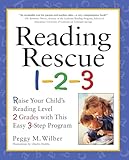IMPROVE YOUR CHILD'S READING COMPREHENSION

HOW TO BE A CHAMPION READER!
SIX STEPS TO BETTER COMPREHENSION
by
Dan Tricarico
Reading is not a passive activity. At least it shouldn’t be. Merely decoding the words on the page and letting them flow over you is not enough to have a meaningful reading experience. Effective readers interact with the text in powerful and significant ways. Most of us know what it’s like to read a passage from a novel, a textbook, or even a magazine article and then look back in frustration because we remember nothing about what we just read. Below are six simple steps that will help you walk away from a reading session secure in your knowledge that you have not only grasped the material, but have retained the important parts long after you stash the book back on the shelf.
Summarizing
One of the easiest ways to stay engaged in a text is to get in the habit of summarizing. As you read, recap in your private thoughts what it was that you just read and what the author was saying. If you can put the main idea(s) in your own words, the chances of you retaining the information increase exponentially. As you think through your summaries as you read, consider such open-ended statements as “What he’s saying here is. . .”, “Her main idea in this section seems to be. . .” or “What just happened was. . .” Summarizing what you’re reading helps you preserve important information and stay focused on your reading goals.
Predicting
Making predictions about what might come next is another powerful technique for staying engaged in your reading. In fact, you already do it more than you realize. You may be watching your favorite detective show on television and find yourself saying something like, “I’ll bet you right after the commercial he goes into the abandoned warehouse and finds the jewels.” You are so engaged in the story that you feel the need to anticipate what will happen next or try to foresee where the plot line will take you. Periodically stopping during your reading and making predictions about what is to come will increase your understanding of what is currently happening and, with luck, create anticipation for what’s to come. And, of course, as in life itself, part of the fun is seeing if you were right.
Clarifying
Every reader encounters problems understanding what he or she is reading. Inexperienced readers often make the incorrect assumption that this makes them “dumb,” or that they “just don’t get it.” This lack of confidence makes it easier to give up and bail out of a text. Before giving up, however, try clarifying. Stop reading, clarify what the problem is, and find a way around it. Is the vocabulary too difficult? Look up the challenging word(s). Did the novelist introduce a new character you’re having trouble tracking? Jot down the character’s name and a brief description. Has the author introduced a new idea that you’re having trouble grasping? Re-read the section or go to the computer and Google the new concept. Maybe another writer will put it in a way that makes sense to you. For every problem you encounter while reading, there is a solution.
Questioning
Just as most of us enjoy a good debate with our closest friends, good readers like to mix it up with the books they’re reading. They do this by constantly questioning the information they are getting from the text. As they read, they will ask questions like: What does he mean by that? Why did she put that in this section and not three sections ago? Does this new concept in chapter six relate in any way to what I read in chapter four? Good readers stay engaged in the text by critically questioning the information throughout their reading session.
Connecting
All of us have heard someone tell a story and thought, “That reminds me of the time I. . .” Something in the story caused us to make an association to something else in our lives. Good readers make these connections all the time. They are constantly connecting what they read to what they’ve read in other books, experiences they have had in their personal lives, or current events that have occurred in society or in history. Connecting the text to other experiences or events gives the reader a more global perspective and allows him or her to link the new information to pre-existing knowledge, resulting in greater comprehension.
Visualizing
Visualizing is one of the most enjoyable ways to increase your understanding during reading. Most often, visualizing is referred to as “playing the movie in your mind.” Especially effective when reading fiction, visualizing allows you to use your five senses to pick up on the word pictures created by the author and create a more vivid and visceral experience. Does the author refer to frying bacon? In your mind’s eye, listen the hiss and sizzle of the grease. Does a police siren suddenly slice through he calm of the city? Use your imagination to “hear” the piercing wail. Does a character sip bitter coffee? “Feel” the aftertaste on your tongue. Does the main character look more like Kate Hudson or Halle Berry? It’s up to you.
In the movies we see at the local multi-plex, we are limited by the director’s vision as to set design, costumes, and casting. The beauty and magic of reading is that we are the directors of every piece we read; we decide how things should look, sound, smell, taste, and feel.
By summarizing, predicting, clarifying, questioning, connecting, and visualizing, it is possible for even the most remedial, reluctant, or inexperienced reader to improve his or her reading comprehension. The key to improved understanding lies in staying engaged in the text and being willing to participate in an interactive experience with the novel, textbook, or magazine article.









